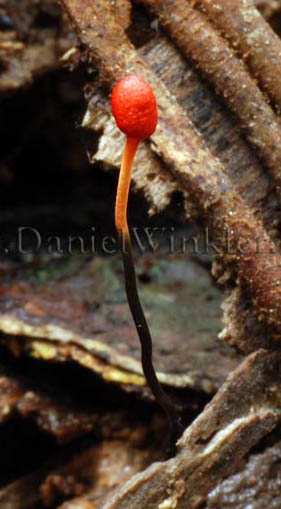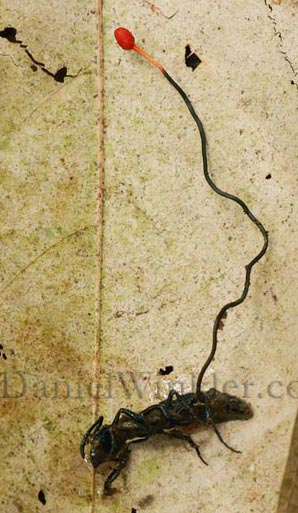Here a few new Cordyceps / Ophiocordyceps photos from specimen I found in the tropical forests of Ecuador, what an incredible place, what enormous biodiversity!
Below an Ophiocordyceps on a weevil with a whole bunch of fruiting bodies growing out of it that is quite similar to Ophiocordyceps curculionum. However DNA analysis by Joey Spatafora, OSU Corvallis have shown that this is most likely a new species closely related to O. curulionium.
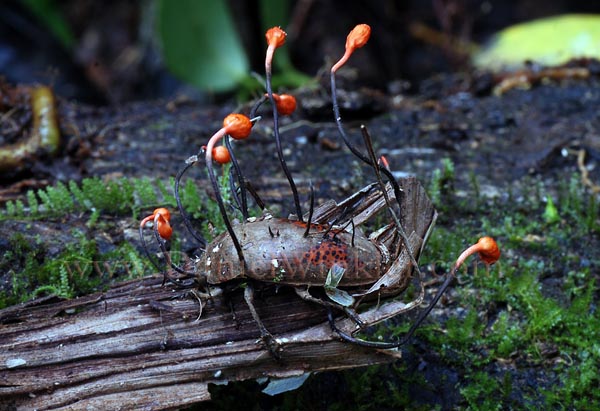
Close ups of the perithecia of Ophiocordyceps australis. What a great red these diminutive stromata display. The perithecia look close to maturity.
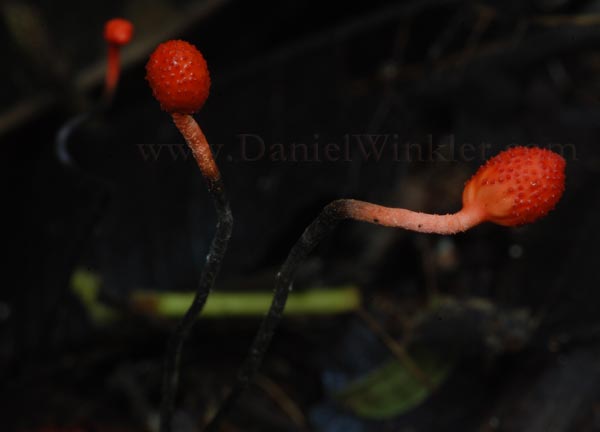
Below the fungus looks like a proper Ophiocordyceps australis, the most common pathogen in the neotropics. It infected a Conga ant (Paraponera sp.), which is one of the biggest ants in the Amazon. Fungus and ant measure about 12 to 15 cm (5 to 6 in). George Yager spotted the single stroma first, I thought it was a tiny red Mycena and was ready to move on, but Larry Evans recognized the Cordyceps.
|
|
|
This ant was tiny, it measured only 1.2 cm (0.5 in) and you can imagine how small the fruiting body is. I only found it when I was taking multiple pictures of another O. australis and saw a tiny red spot down below.
I am not sure if this is a specimen of Ophiocordyceps australis itself, the red fertile tissue of the fruiting body is less rounded than the typical O. australis.
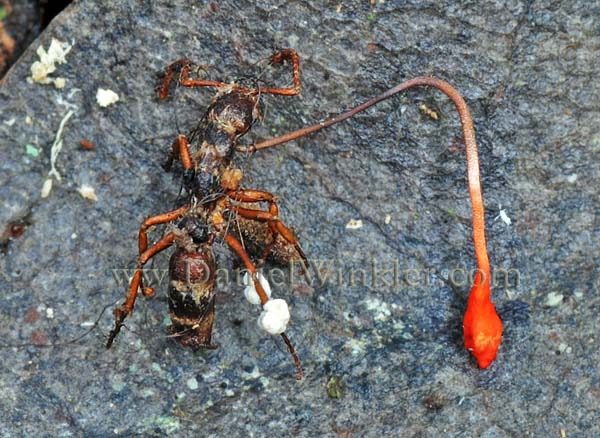
Note the white growths on the hind leg. They look like conidiomata, which produce spore-like conidia. Conidia are asexual spores, basically reproductive cell clones. Often Cordyceps are only reproducing through conidia. A fungal organism that only produces conidia is known as an anamorph. Anamorphs do not grow stromata or fruiting bodies, only teleomorphs do. Usually lack of fruiting bodies makes identification of a Cordyceps much more difficult.
Near the Umbuni waterfalls I found this creature. At first there were just a few brightly orange stromata visible coming out of a decaying trunk, a favorite site for Cordyceps to direct its prey to dig in before kill off.
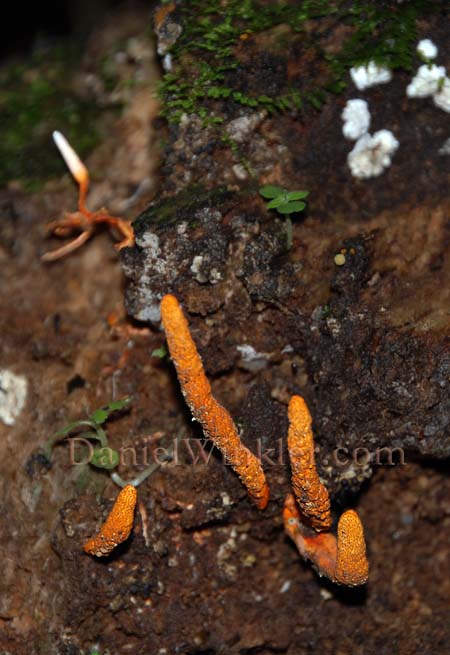
Once the fungus cum coleopteran [=beetle] larva was excavated this wild gestalt became visible:
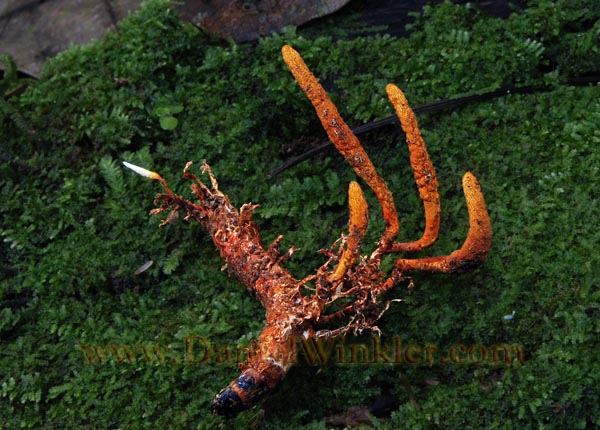
According to Prof. Spatafora this fungus is a member of Metacordyceps. However, these species seem to acquire hyperparasites quite easily, making the collection of molecular data difficult. A possible name for this morphology is Metacordyceps martialis.
Another Cordyceps, according to Joey Spatafora, OSU mycologist and Cordyceps expert, possibly a Metacordyceps, "Joey wrote: "There are a number of Asian species with this overall morphology (e.g. M. liangshanesis) but I do not know of anything from South America." Here a recent article on the taxonomic status of Metacordyceps, one of the authors being Joey Spatafora.
White fertile stroma tissue is not too common. It is growing on a lepidopteran larva that was also buried in a decaying trunk. Check out the white perithecia.
2020 update: This species is now described as Nigelia martiale
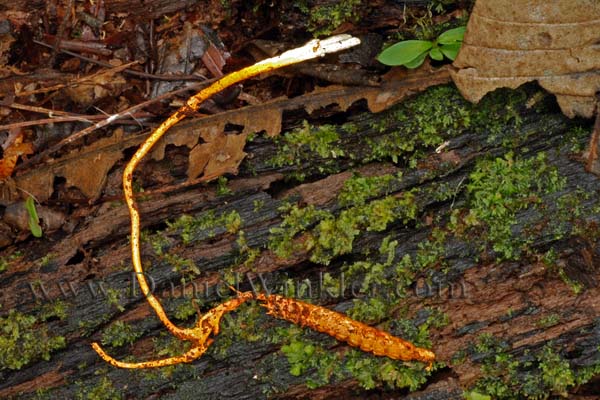
Close up of the stroma
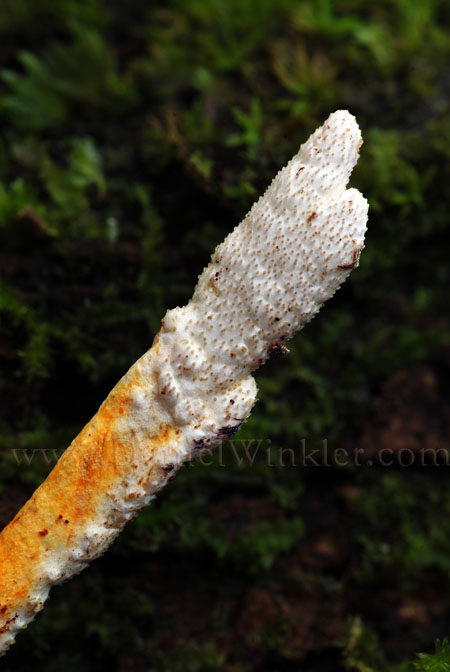
Cordyceps from Mindo, western slope of the Andes
Below a Cordyceps anamorph that could be Isaria tenuipes, a.k.a. Paecilomyces tenuipes, but there are also other morphologically similar anamorphs. We found it in on trunk near Mindo.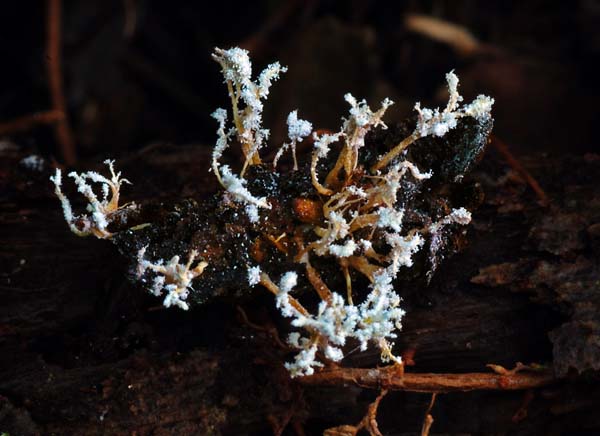
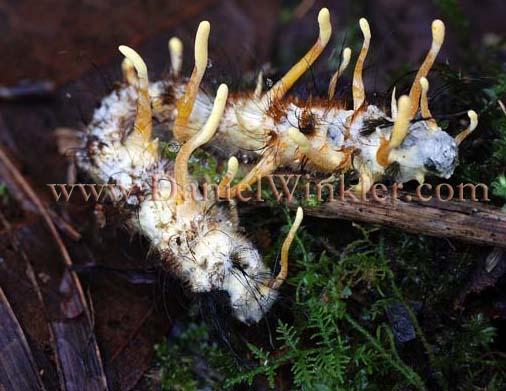
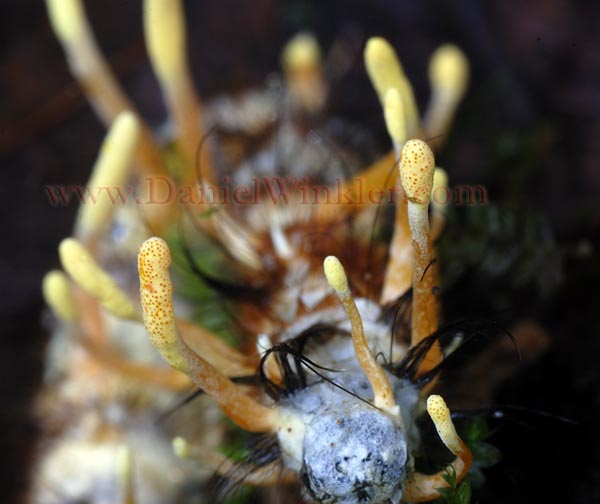
And finally an unidentified Cordyceps relative we found on the wall in our hobbit-style guest house in Mindo. Just wouldn't find a Cordyceps on your wall if it was an upper class hotel, right?
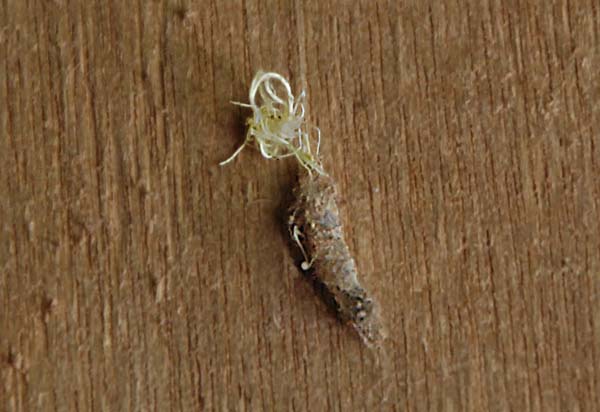
First uploaded 3-6-2011, last update 11-30-2011

